The official discord link if you wish to join the discord: https://discord.gg/j5RKwCvAFu
Support the wiki on our official Ko-Fi page or Patreon page!
Paper Mario Canonicity
This argument has started ever since Paper Jam has been revealed, and it is still used to this day. I don't know how many people will agree, but this blog is made to prove why the Mario from the Paper Mario series is the same Mario we all know. This will be using different medias for evidence, and it will address common counter arguments.
Evidence from games prior to Paper Jam
There's plenty of evidence from the games themselves that these characters in in-fact connected.
Paper Mario
In the original Paper Mario, Goombario's Tattle will state that Mario has been fighting Goombas ever since Super Mario Bros. This is a direct callback to the game itself.

Goombario is generally smart when it comes to his knowledge on things, as his Tattle demonstrates this. He's also a big fan of Mario, and the events of SMB are popular enough to be seen in plays or appear in Bowser's own realms. Thus, Goombario is a reliable source.
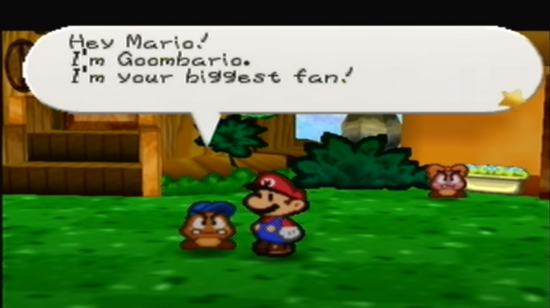
Back to Paper Mario, we can read Luigi's Diary in his secret basement. Luigi writes about how the adventure stuff is difficult, and he enjoyed playing Golf, Tennis, and throw Parties. These are obvious callbacks to Mario Golf, Tennis, and Party. And while I am well aware that the Paper Mario series has referenced a sports title, mainly Mario Kart, it should be well noted that these were not intended to be their own paper versions, as at the time Paper Mario released, it was alongside the N64 era. Thus it's most likely they are direct callbacks to those N64 era games. This would also need to be the case for continuity sake.
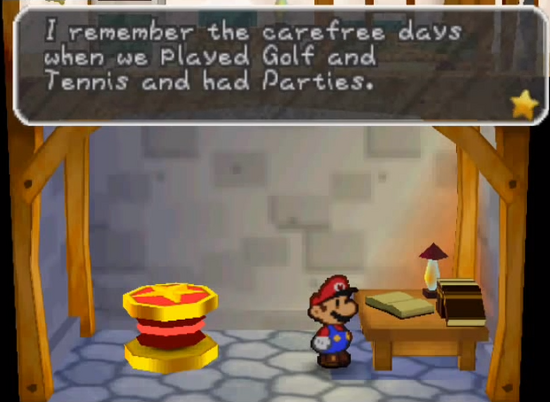
Luigi also notes in his diary that he's afraid of ghosts, a personality trait that was established before Luigi's Mansion and later on used in other games.
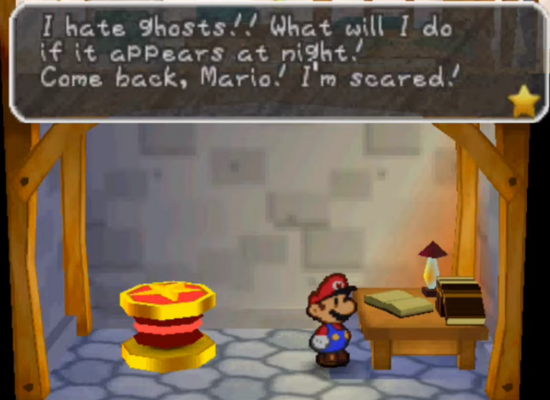
Paper Mario is considered a sequel to Super Mario RPG, at least in terms of its lore and story. The general plot of Paper Mario is Bowser stealing the Star Rod to grant his own wishes. However, it just so happens that Super Mario RPG is also a game where wishing is its main focus. The general plot for RPG is that Smithy sent Exor to destroy Star Road (remember this location, it's important) in order to stop people from making wishes. So why are these two games connected? Well because the Star Rod is what is used to grant wishes in Super Mario RPG. How do we know this? Well we know that as Geno battles Bowyer, he mentions that he works for a "higher authority", and was sent to get back each Star Piece.
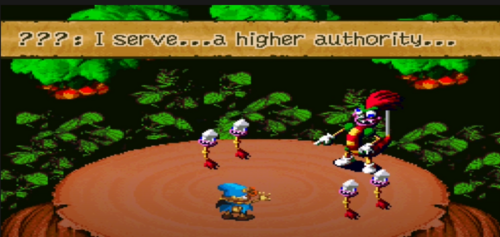
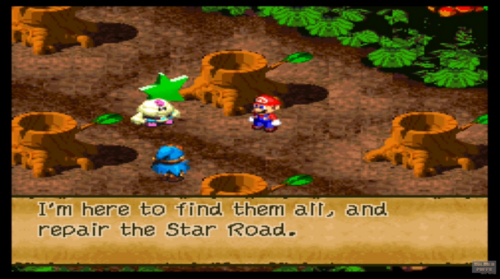
But who exactly are those higher authorities? This is where Paper Mario's Star Spirits come in. The Star Spirits are the watcher over the Star Rod, and are meant to be the protectors of it.
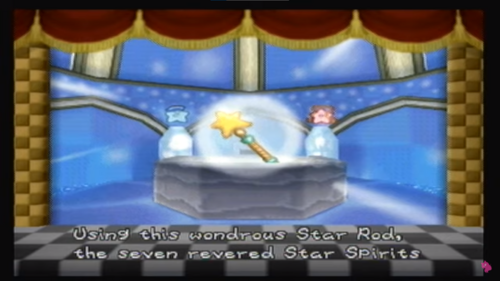
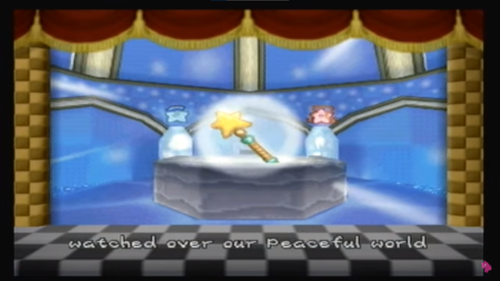
However, you might think this isn't enough. For further proof, let's go back to Geno. If you are unfamiliar with Super Mario RPG, Geno is actually just someone possessing a toy. You might notice something, and that is that Geno's true form is that of a star.
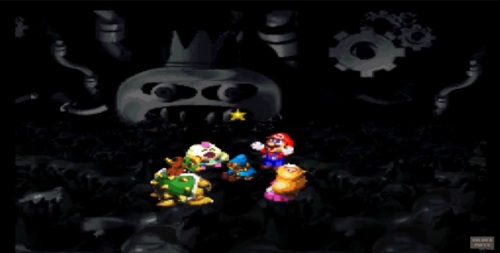
He's a star, just like the Star Spirits. You might think this is just some coincidence, however this further relates to Paper Mario. We know that Geno is a star who works for higher authorities, and Paper Mario just so happens to have someone similar. That being Twink.
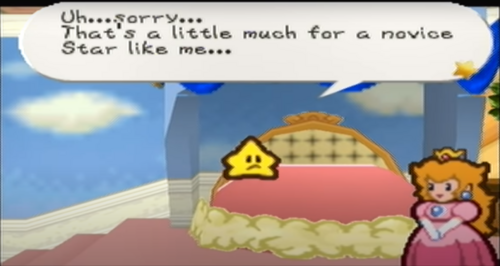
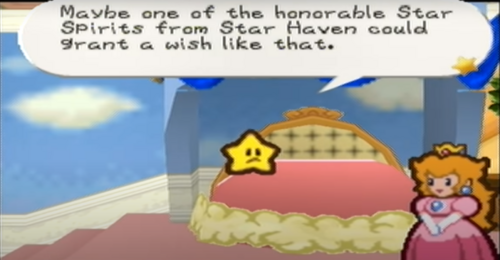
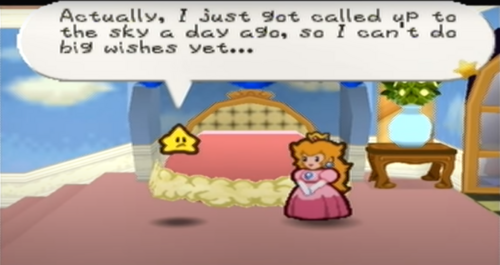
Twink is also a Star who was sent down to help others by higher authorities, just like Geno. Thus they share the same occupation and general roles, connecting themselves. It should be noted that Stars are just a general species within the Mario universe. We won't stop there, remember Star Road? I hope so, because the two locations are also the same.
Star Road (also called Star World) actually first comes from Super Mario World, making a further connection of a mainline title to other games. Star Road in both Super Mario RPG and Paper Mario are stated to be above the clouds. Something Super Mario World also displays.
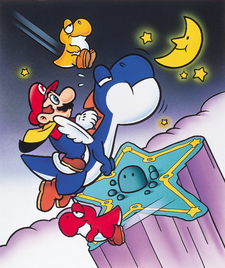
They both even look basically identical in game, just with different artstyles, but the intention is clear.
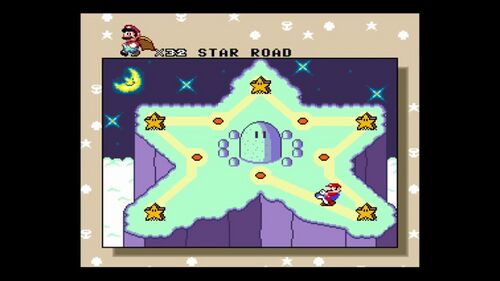
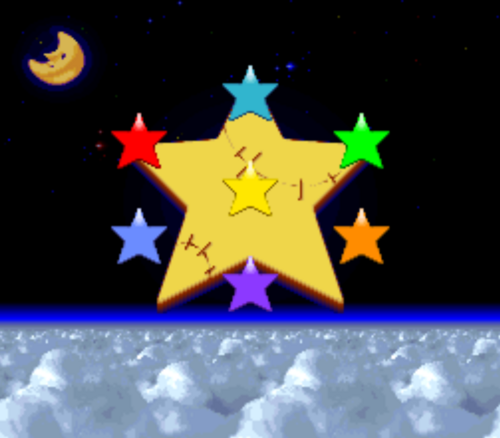
Both are star locations that are the location of were wishes are to be granted at. They both are star related locations (even if the names and place looks different, this is a general thing within Mario however). And they are both where Star-beings live at. If you're still not convinced, I present my final argument. How are the wishes granted? Wishes are described to take shape into a Wish Star, and become little shooting stars. Paper Mario directly says this is also how wishes are formed.
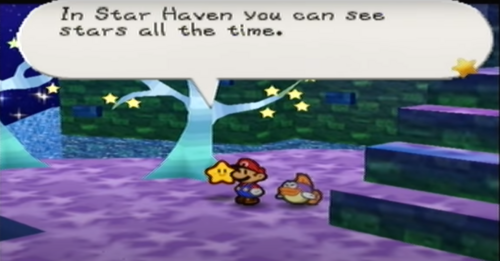
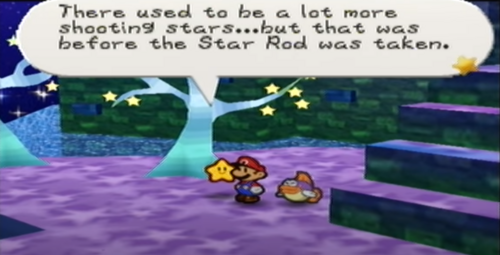
Additionally, if we fast forward to Paper Mario: Color Splash, we can also directly see Mario and Huey make a wish. Which is done as a shooting star.
That was a lot of connections. I guess Paper Mario being a scrapped Super Mario RPG 2 makes far more sense now. Back to more connections using... the same two games. Kind of.
In Paper Mario, we see Mario be able to take the form of his NES-self, an obvious callback to his older adventures. Super Mario RPG actually does the exact same thing. Side-note, but Mario looking pixel-like is a canon thing he has acknowledged himself[1].


Mario Kart: Super Circuit
In Mario Kart: Super Circuit, their version of Rainbow Road has Bowser's castle from the original Paper Mario.
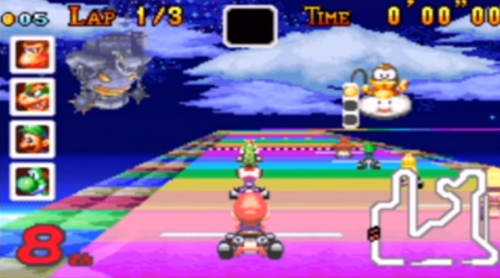
Mario & Luigi: Superstar Saga
In Mario & Luigi: Superstar Saga, there's a room that contains the Blocks of Nostalgia. As we can clearly see, this game connects itself with previous games as "past adventures", thus being past events.
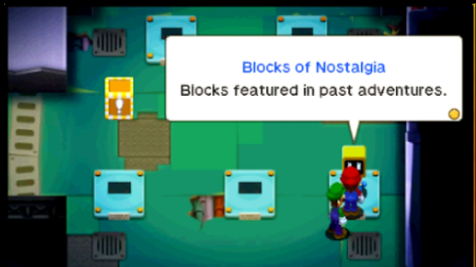
These blocks include events from the following:
A block from Super Mario Bros.
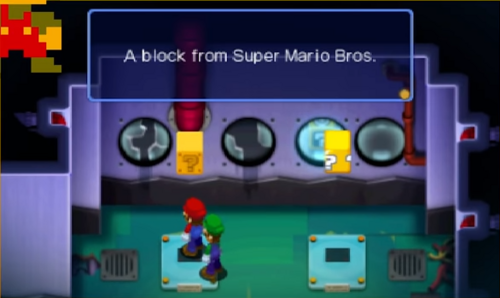
A block from Super Mario World.
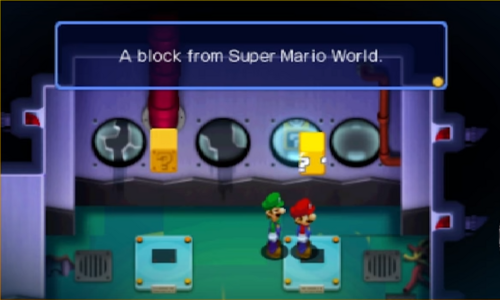
A block from Super Mario 64.
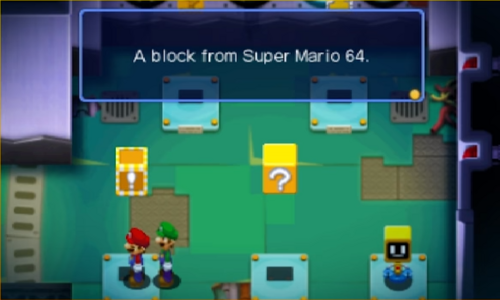
And mostly importantly, a block from Paper Mario.
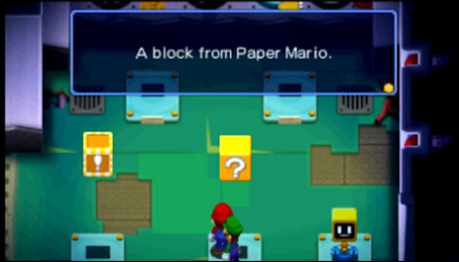
A lot of people like to dismiss these as "references" or "easter eggs", however the game went out of the way to note that these games were previous adventures Mario has done. Simply dismissing these as either of those is ignorant, especially with how consistent the series gets later on with these.
Paper Mario: The Thousand Year Door
This game has a few things that connect it with other games. There's the established Luigi stating he's driven karts before in an earlier section.
Mario yet again has his design from Super Mario Bros.
In Podley's Place, we meet Podley. If you're a nerd like me, you'll realize that Podley is actually a resident from the Beanbean Kingdom, a location from Superstar Saga.
If you also notice, he sells Chuckola Cola. Chuckola Cola is Bobbery's favorite drink, and left an impact in his life. Why am I telling you this? Well, because Chuckola Cola is actually made in the BeanBean Kingdom. This establishes that Superstar Saga did happen prior, and that the Beanbean Kingdom exists.
Mario & Luigi: Partners in Time
Remember Star Hill? It's back. In Partners in Time, you return to the past to reach Star Hill. It even has a similar pathway to Paper Mario.

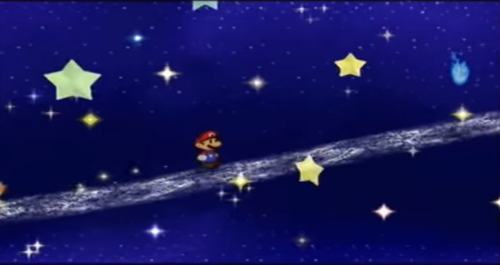
The location even notes that it's the sacred realm of the stars, which is most likely in reference to either the Wish Stars or Star Spirits.
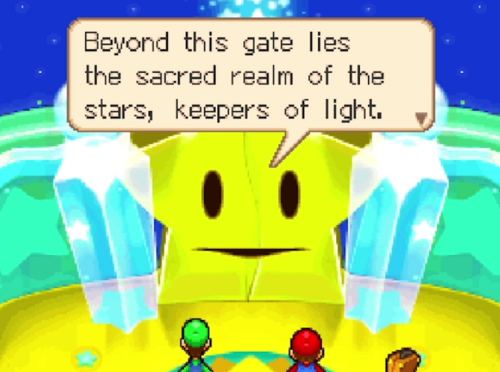
I should note that the location likely looks different as this is the Star Hill from the past, or how Nintendo likes to just change how a location looks. It should also be noted that the locations in Super Mario RPG, Paper Mario, and PiT all refer to the locations as Star Hill in Japan.
Mario Party 5
This one is well known. In Mario Party 5, the primary setting is known as the Dream Depot. The guardians of the Dream Depot are the Star Spirits, who originate from the original Paper Mario.
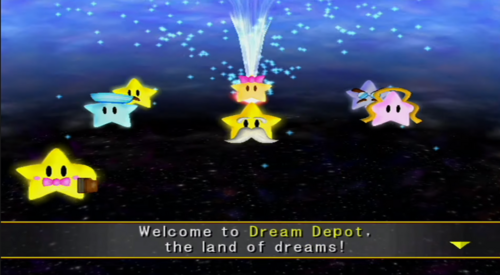
This should be self-explanatory, they actual characters return and already know about Mario. However, some people don't agree that they're the same. This is because they're named as the "Star Guardians", and aren't at Star Haven. This is however not at all an issue, as the Dream Depot actually takes place at Star Haven. Let's read the manual.
"In the night sky, past the moon and beyond the stars, there's a dream world known as Dream Depot, where everyone's dreams come together."[2]
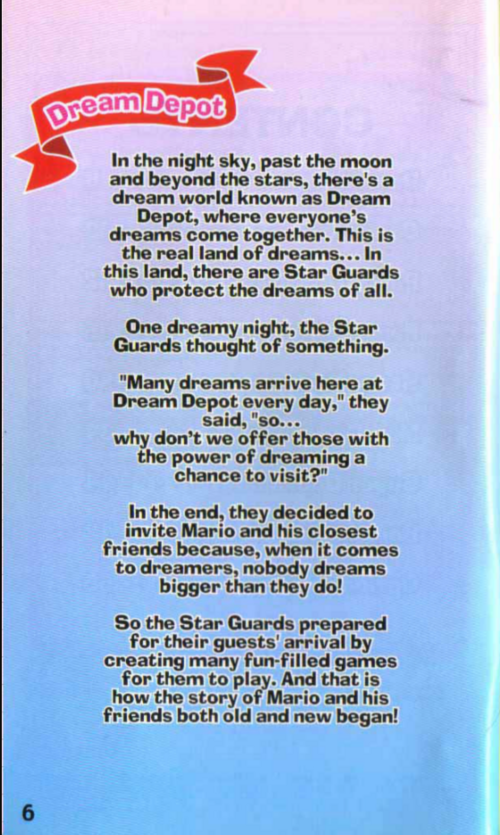
The description of the location is exactly described as where Star Haven is located, beyond the stars in the sky. This could simply mean that they hold two occupations, as they are both within the same location. Some people however will claim that simply in Mario Party 5 they're just alternate versions with different jobs. This wouldn't make sense as the Dream Depot is an area that also grants wishes, so it makes sense for them to guard both areas with similar attributes.
Mario Party 6
Whackas are moles originally from Paper Mario, which come back in Mario Party 6's Snowflake Lake board. Not much else to say.
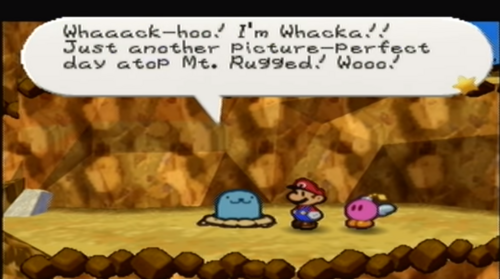
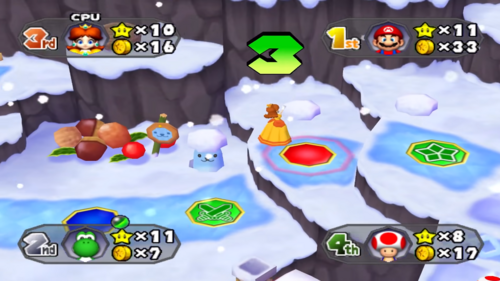
Mario Pinball Land
Koopatrols were enemies first introduced in Paper Mario, and later come back in Mario Pinball Land as enemies yet again. Not much else to say again.
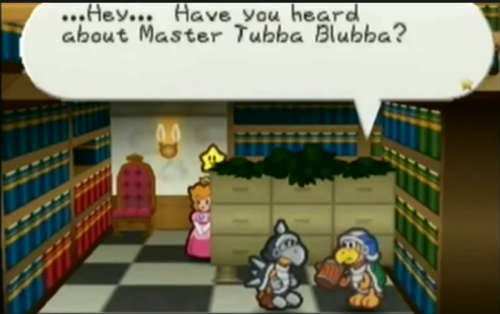
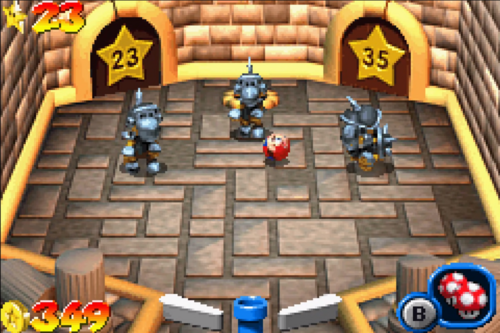
Super Mario 64 DS
In the remake/pseudo-sequel of Super Mario 64, King Goomboss who initally appears in Paper Mario returns as a boss battle. He directly notes that Mario always stomps on him and his people.
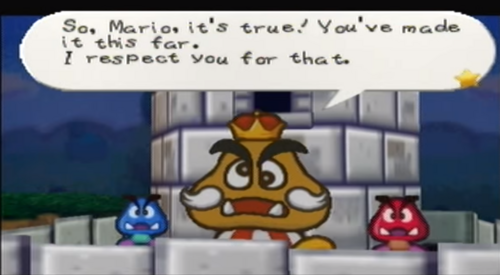
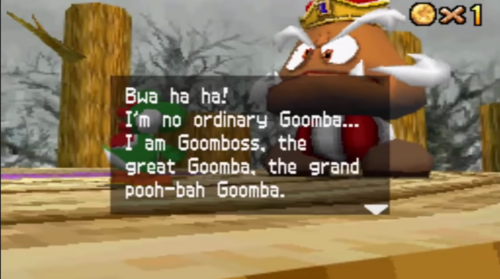
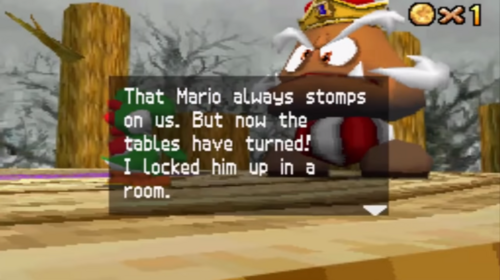
Some people point out that his name is different from the two games, however this is an English issue only, as both games name him "クリキング". Another issue is people claiming that he is only referring to Goombas and not his fight, however he clearly stated "us", which includes him. So this clearly means that Goomboss had conflicts with Mario in the past. This makes a consistent continuity.
Evidence from games after Paper Jam
Paper Jam made a lot of people deny that they are the same, however I will address those later. For now, we need to address evidence from games after Paper Jam was released.
Paper Mario: Color Splash
Paper Mario: Color Splash loves to reference previous games.
Wart, the final boss from Super Mario Bros 2., makes his return terrorizing dreams yet again. Just like how he did in his two, technically three in A Link's Awakening.
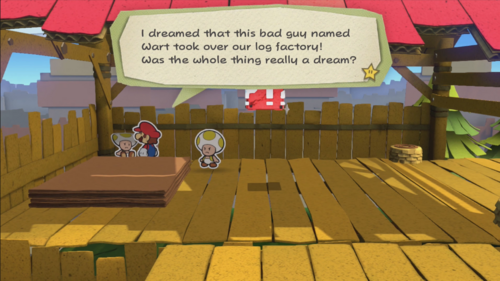
The Flute from The Legend of Z-, no wait, Super Mario Bros. 3 makes its return as an item the same as how it did in 3, with the same tune.
One of the levels in the game is directly taken from Super Mario Bros. 3. The Toad in this level describes it as an "ancient image", which is likely in reference that its an older design, as in this is how people used to look. We've already established Mario has looked canonically 8-bit before. Huey even notes it makes him feel nostalgic.
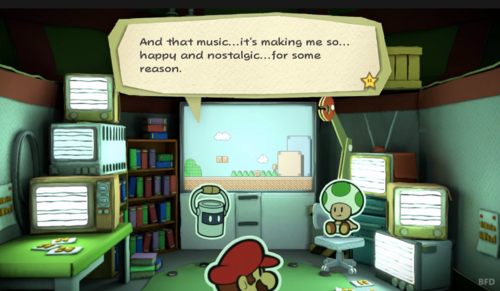
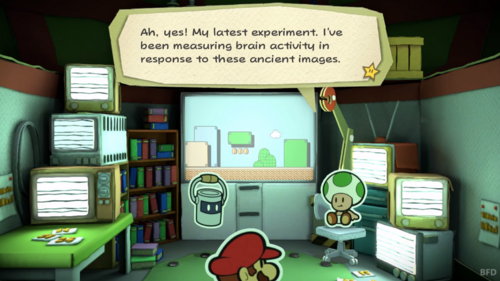
Paper Mario: The Origami King
In this game, we find a gallery of Peach within her cruise. We can see Peach from each appearance has made. One is missing however, that being Paper Jam. Many people will claim it isn't there simply because Paper Jam isn't a Paper Mario title. This can be countered by the fact that this is meant to be a general history of Paper Peach. No reason not to add Paper Jam when the Paper Mario series has referenced the M&L series and so has the M&L series. Also the fact that the two can have a game clearly mean they don't care. Thus, the Paper Peach from Paper Jam is not the Peach in the Paper Mario series.
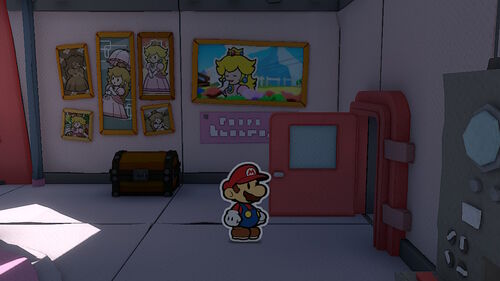
In Bowser's castle, he fittingly has portraits of himself depicting his design from the mainline series. This supports the fact that the Paper Mario series is only a style change like other games. I will elaborate later on.
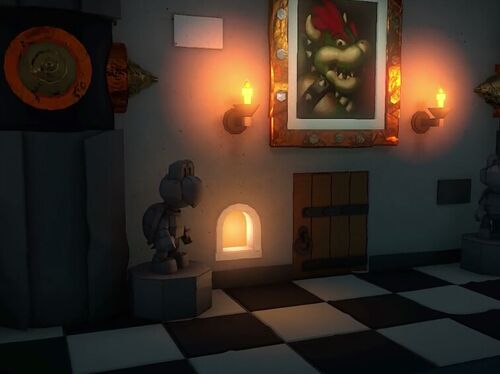
Primary Evidence Extended From Games
Word of God
We can also say that Mario and Paper Mario are the same character due to word of god, Miyamoto. Let's quote something every Mario versus debater uses at some point.
"If you're familiar with things like Popeye and some of the old comic characters, you would oftentimes see this cast of characters that takes on different roles depending on the comic or cartoon," Miyamoto said. "They might be businessman in one [cartoon] or a pirate in another. Depending on the story that was being told, they would change roles. So, to a certain degree, I look at our characters in a similar way and feel that they can take on different roles in different games."
Let's elaborate on what he's saying. Miyamoto views Mario as an actor (not an actual one) who can take on different roles. What he's referencing is how an actor can play the role of a super hero in one film, and play as a super villain in another film. They are two different characters, but it's still the exact same actor playing as them. So Mario being a doctor in one game and a chef in another game doesn't matter because it's still Mario. He's also referencing cartoon/comic book characters, in which those would commonly have a main character have varying roles or occupations in different episodes. Tom the Cat can be a knight in one episode, or a house cat.
Miyamoto in an interview also still has this view.
Q: "So there are multiple Links, but is it always the same Mario?"
A: "Yes."
Miyamoto views each Mario as the same, including Paper Mario. Now, this doesn't mean that every Mario is the same, but it does mean that any media with Mario is the same Mario, unless it contradicts the continuity. Which Paper Mario does not.
Secondary Sources
Now I will proceed to use sources that aren't from the games nor Word of God, but secondary sources that Nintendo gave the thumbs up.
Partners in Time Magazine
The Nintendo UK magazine in the Partners in Time mentions the time travel and Mario's past adventures. Most notably, they state, "Before the brothers were turned into paper". They say this while also mentioning games from both mainline and spin-offs, thus a further connection.
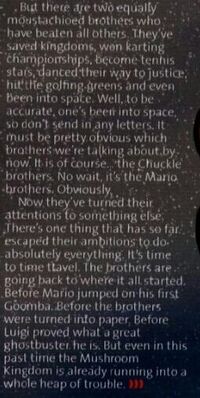
The people who make this magazine source that all information they are given is either from Nintendo, or is correct from personal research.
"Everything we write is based on our own opinions. Information we use comes from the companies, or is correct to our knowledge. News, previews and release dates are based on the information we found to be true at the time of going to press."
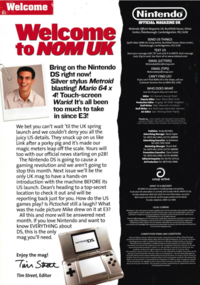
Super Mario Bros. Encyclopedia
In the official Mario encyclopedia, there's a section that mentions Mario's overall history and his involvement. Four stars are mainline games, and three stars are major Mario games, to which each Paper Mario game has. They note that these appearances are the same Mario as he is from the mainline games.
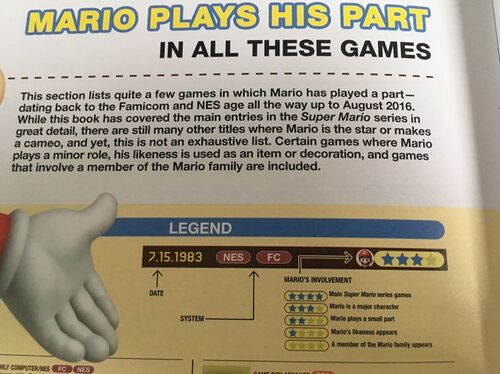
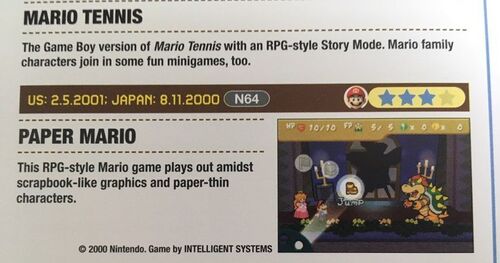
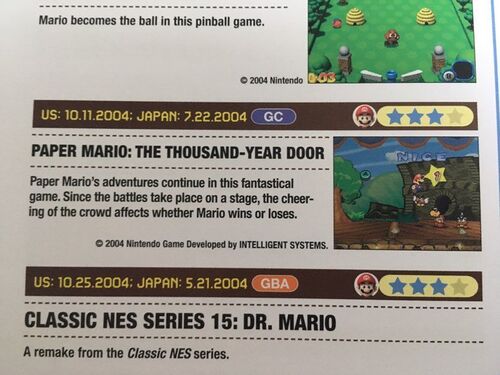
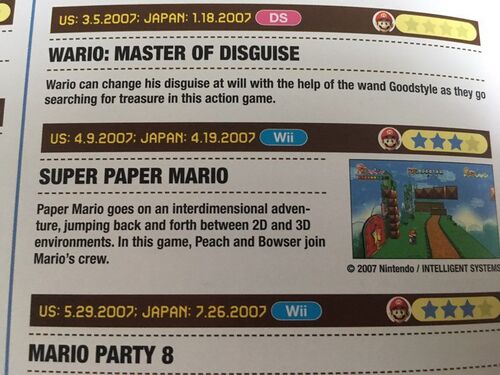
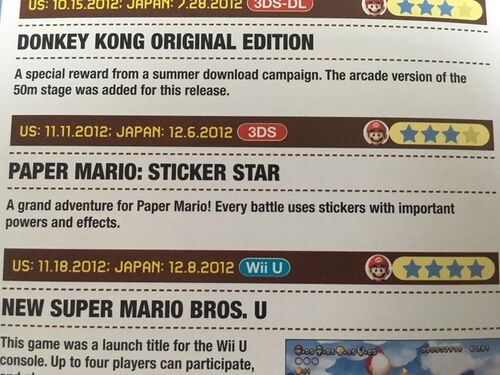
Common Arguments
Mario & Luigi: Paper Jam
Let's get the most obvious argument done. In Mario & Luigi Paper Jam, the main gimmick of the game is that Paper Mario appears in the game, along with everyone else from a Paper universe. This means that they retconned everything, right? Well, no. The main issue is that Paper Jam has zero references to past Paper Mario games and make no reference to the series as a whole. The game never makes it out to be Paper Mario from the Paper Mario series, but rather that it's a parallel universe. Paper Jam actually contradicts itself if you really wanted to claim that they are the same. So, the game is clearly meant to be after Sticker Star. However, this game cannot be connected to Sticker Star due a massive contradiction to the previous entry.
The game has a Royal Sticker, which are important to Paper Mario: Sticker Star.
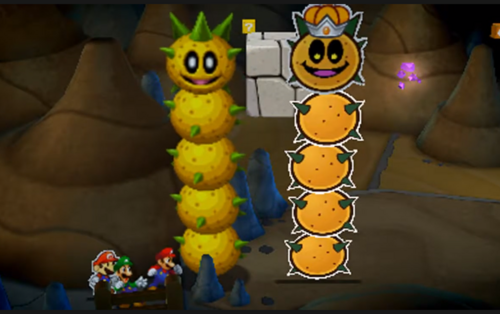
The general plot of Sticker Star is that a Sticker Festival is held once a year, which the Sticker Comet appears. Bowser crashed the festival, touched the comet, sent all of the Royal Stickers around the world, and corrupted himself. This causes Kersti to appear and make Mario help out.
There are plenty of issues. First off, if a Royal Sticker is being used, then the comet has been touched, and the Sticker Festival was being held. There were no mentions of a Sticker Festival occurring. No Sticker Festival means no Sticker Comet, which means no Royal Sticker. Not only that, if there was one, then the comet was touched, and someone would be corrupted. Which no one has the final Royal Sticker. Also, if it were touched, then Kersti herself would be appearing, as she is summoned if this were to happen. Clearly the games aren't connected. And if you were to somehow argue that Paper Jam is before Sticker Star, this still begs the question as to where Kersti is and why isn't anyone corrupted. It also can't be, since Kersti thinks Mario did it initially. And of course, Mario's wish at the end of Sticker Star was that the Sticker Festival would no longer be ruined. Thus his wish would be contradicted.
The Book Argument
People also like to argue that the Paper Mario series is within a book due to the openings of the first four games. This however isn't true. The series isn't inside of a book, it's from our perspective that a story is being told. It also wouldn't make sense, since the opening of Super Paper Mario is being opened by the Dark Prognosticus. Despite the fact that it's an actual book in-game meant to tell the future. So clearly it's just meant to tell us the story of the game.
Not only that, but Super Mario Galaxy 2's opening also has a book to tell us the story of the game. Not that they're all just literally in a book. Obviously the mainline games aren't contained within a book.
And finally, if they were in a book, why does no one in Paper Jam know about the book? Each game shows us someone is reading the story by a narrator. So if that were the case, why would no one in Peach's castle be aware of said story or book if someone were to literally read it? And before someone uses the Mario Story argument from Luigi's Mansion, Mario's adventures are often recorded in the form of video games or stage plays.
The Paper Argument
After Super Paper Mario, the Paper Mario series has made all of the characters become actual paper normally. Which mainline Mario isn't. I counter this however by saying that Mario characters canonically change how their bodies and physiology at random instances. We've seen this as earlier shown within Super Mario RPG and Paper Mario games allowing Mario to become 8-bit naturally, as well as various guides depicting they've changed form. However, it isn't just spin-offs that note these different forms within the past.
In Super Mario Sunshine, F.L.U.D.D.'s analysis on Mario depicts his older battles with Bowser, showing off the original designs. It's also shown on the bottom that games such as Mario Bros., Super Mario Bros. 2, Super Mario Bros. 3, Super Mario Kart, and Mario Kart 64 are scanned. Suggesting that these had their in-game styles as well.
In Paper Mario: Color Splash, the Toad directly noted the events of Super Mario Bros. 3 to have happened, retaining the NES design.
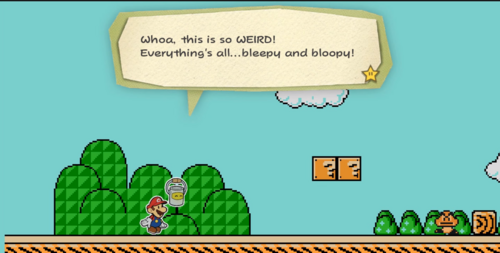
There exist stage plays of Mario's adventure, using the original NES style.
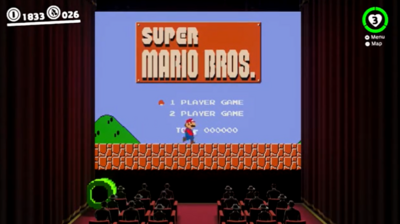
In Super Mario Odyssey, Toad notes how he misses Mario's old blocky and polygonal look from Super Mario 64.
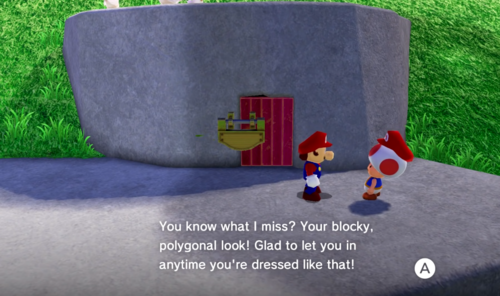
We can also see within Bowser's memories that their former battles with Mario has the original styles of the game.
In the Yoshi's Island series, there exists Yoshi's Wooly World. An entire game where everyone and everything is made out of yarn. Despite this, the game is officially listed in the timeline and History of Yoshi. It was also stated to be within the main universe.
On Yoshi’s Woolly World for the Wii U you began working with Good Feel. Could you give us more details on that?
Tezuka: Good Feel made Kirby’s Epic Yarn for the original Wii and I thought the techniques they used had created a genuinely new type of action game. And because of that…
Ebisu: … They asked us if we could make a wool-based game for Yoshi too.
Tezuka: They had already been successful, and I thought that they had already created something that would fit well in the Yoshi universe.
In Yoshi's Crafted World, an interview with the devs confirmed the game took place within the main universe, despite the world being made out of cardboard, paper, and other junk, it's still in Yoshi's actual world.
So you thought a crafted world suited this idea of seeing into the background too?
Yamamoto: I considered a lot of other styles, but I thought the crafted one suited the Yoshi world and, after thinking it through, I chose that one.
They also confirm that it is the original Yoshi turned into flocky in the same interview
Yoshi 101 What sort of material is Yoshi made from in this game and how did you decide what to use?
Matsumiya: Yoshi’s body is made from a type of crafting material called ‘flocky’.
Yamamoto: Originally he was just the real Yoshi though.
Real Yoshi?
Yamamoto: The plain old original textured Yoshi that appeared in the Mario series. Because the game world was something similar to the real world, having the ordinary Yoshi standing there seemed a little odd. So we thought it would be better to have a Yoshi that fit into the game world and started searching for the right look.
In Mario Kart Tour, we were given costumes of Mario's SNES design based on Super Mario Kart, as well as Donkey Jr.
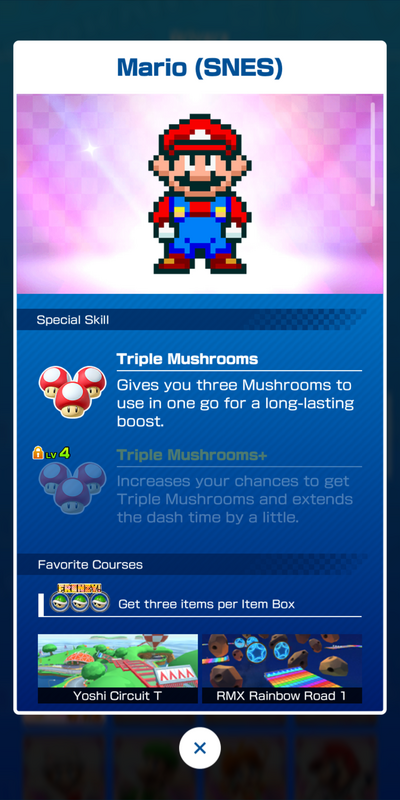
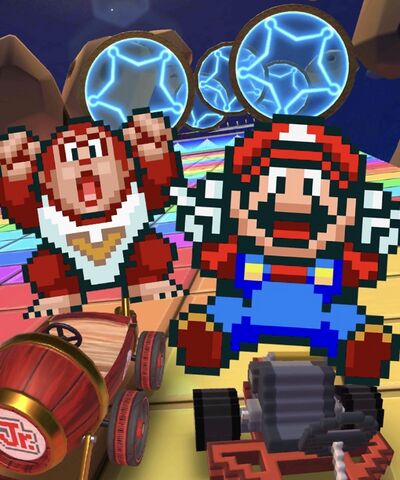
However, the evidence goes well beyond than just the games.
Mario's Picross Manga Collection also shows off how Mario and others took on a specific appearances during their life. For example, a pixelated Mario is shown to be what he was like during the events of Super Mario Bros. He is even noted to be clumsier and shown to be weaker then Wario during the Virtual Boy era which would be consistent with how he gets stronger over time and he became weaker upon being transformed back to a prior time.
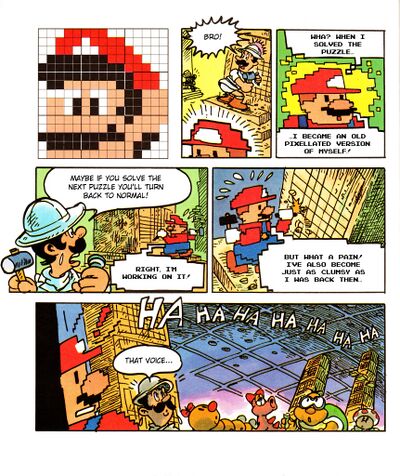
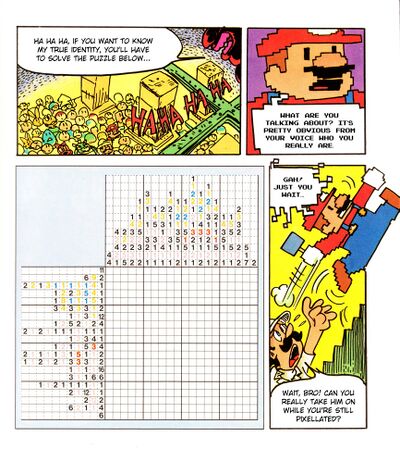
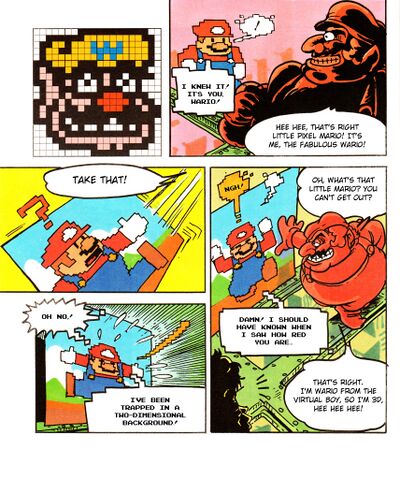
Mario then becomes stronger when he turns into himself during the Super Mario 64 era, and this makes sense considering his consistent narrative of growing stronger.
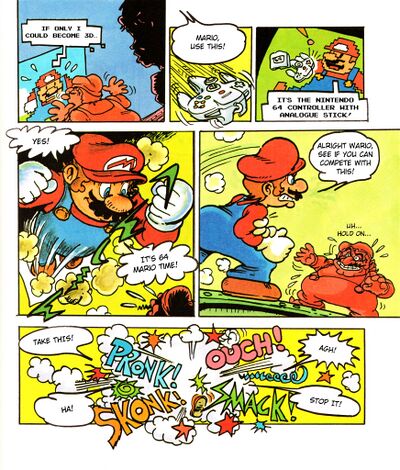
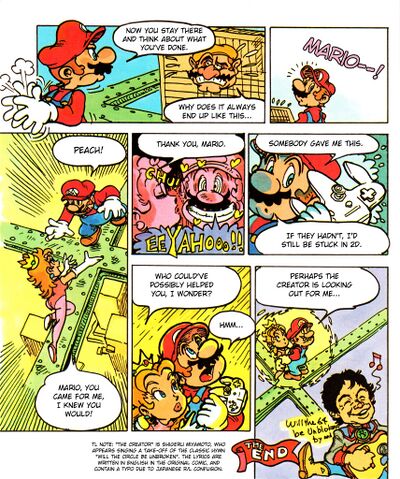
The Mario Picross Manga Collection was also made to double official guides to go along with the games Mario's Picross, Mario's Super Picross, and Picross 2 in Japan, so it's fine to use as at least a secondary source of canon.
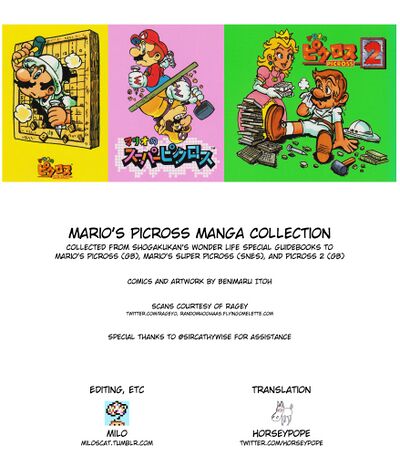
In alternate timelines such as Dr. Mario when adapting Super Paper Mario, various Peach's from different points in time were pulled in within the current point in time. And here we can directly see both her NES and Paper designs are within the same timeline. Further proving the cast changes design canonically.
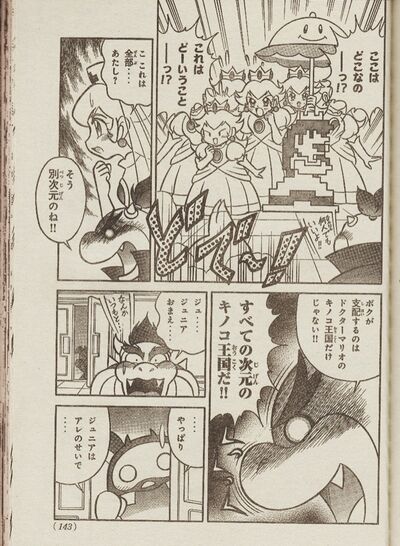
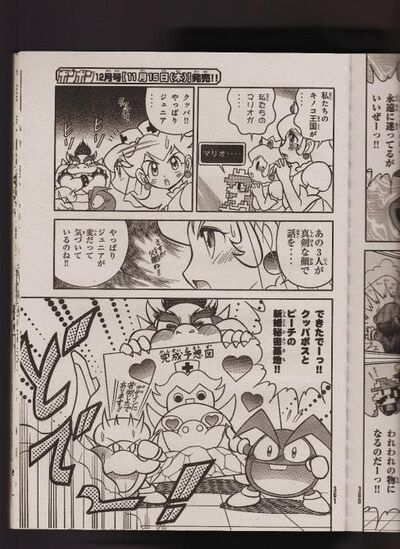
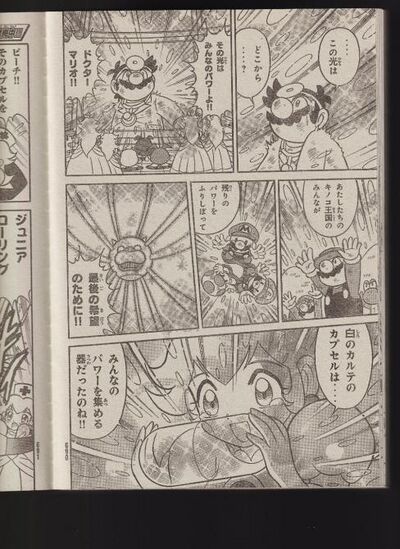
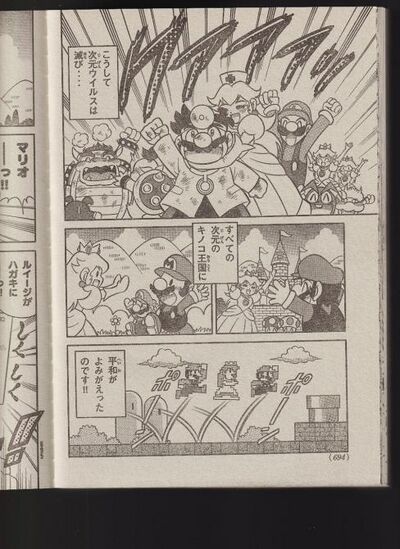
Thus, the Mario universe can change shape and form, including paper.
Conclusion
They're the same characters, same universe, and the book in Paper Jam is an alternate world unrelated with Paper Mario. I could pull off all of the minor references, but I think at this point, I have more than enough proof from the games, guides, authors, and others. Dismissing these as just references is just ignoring evidence.
